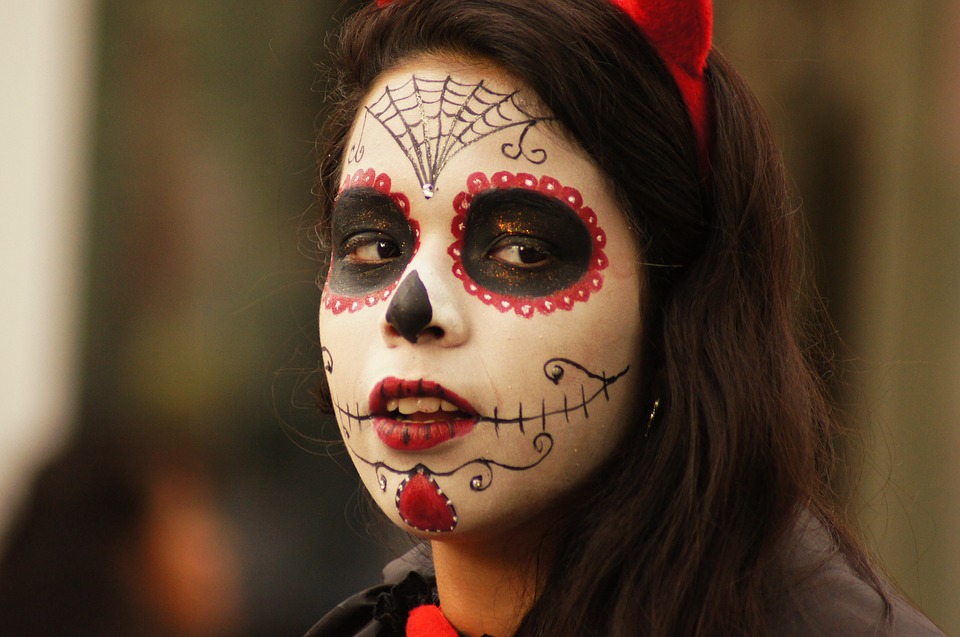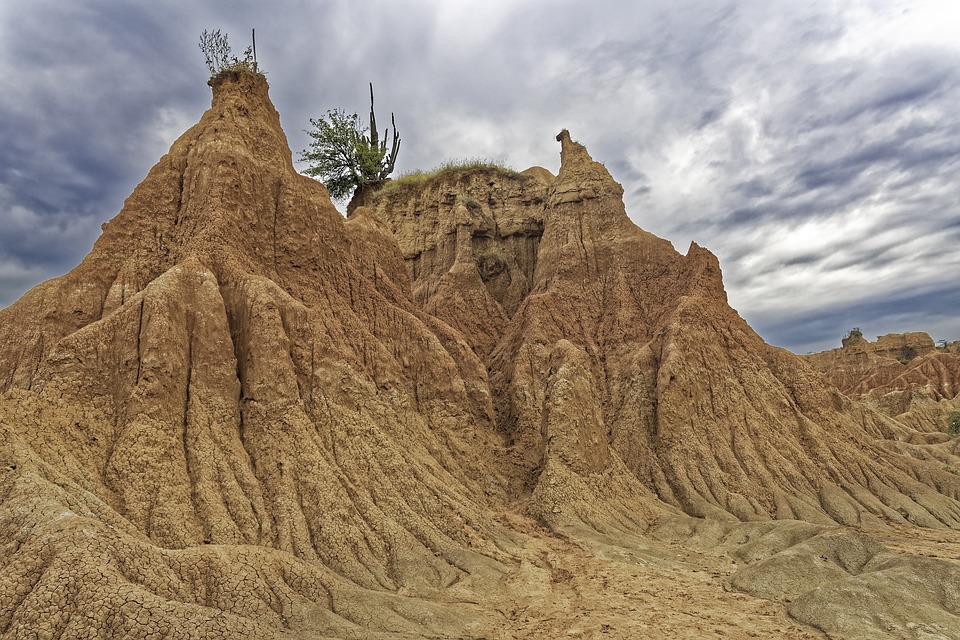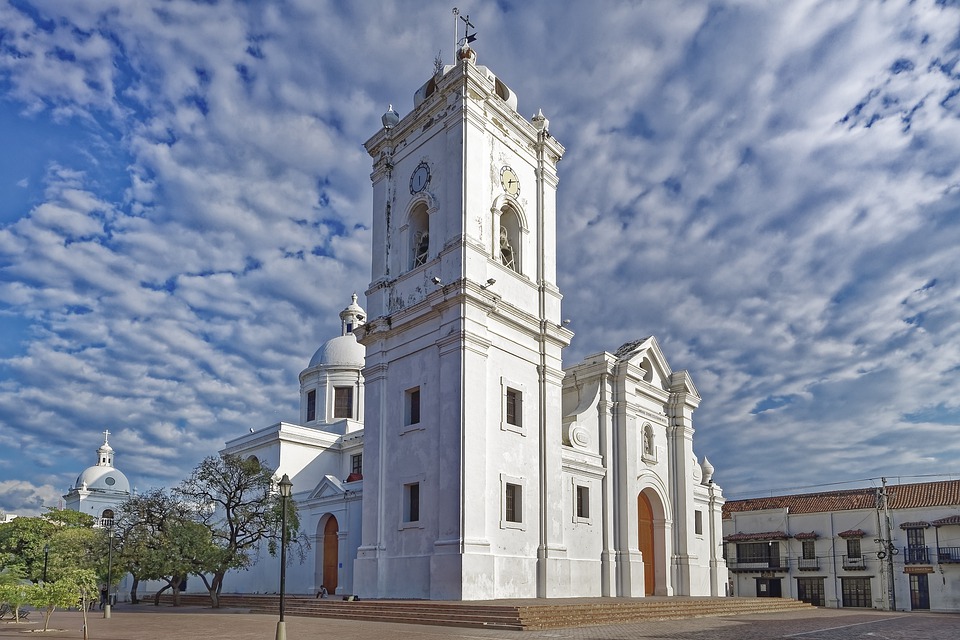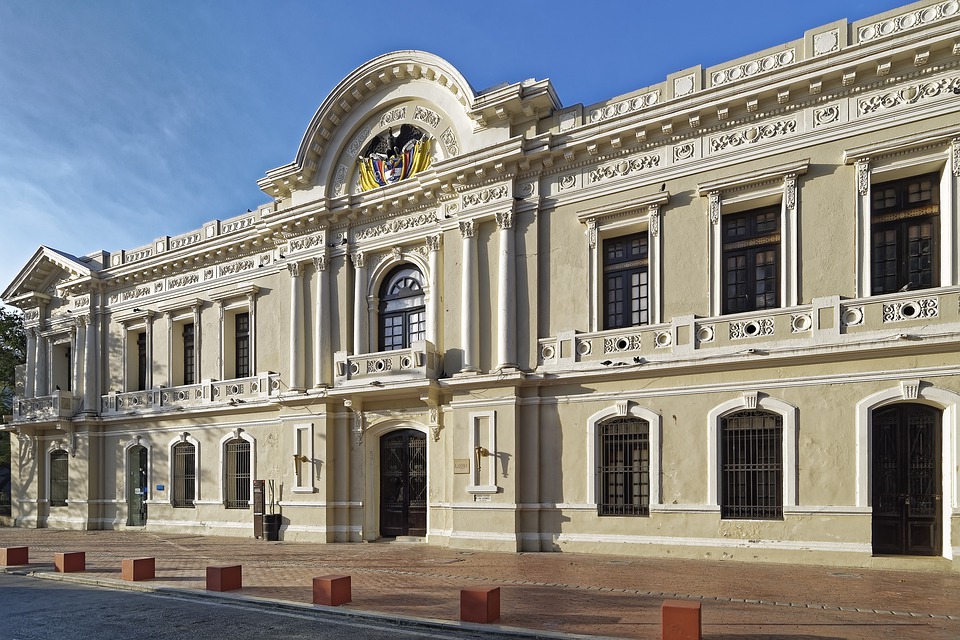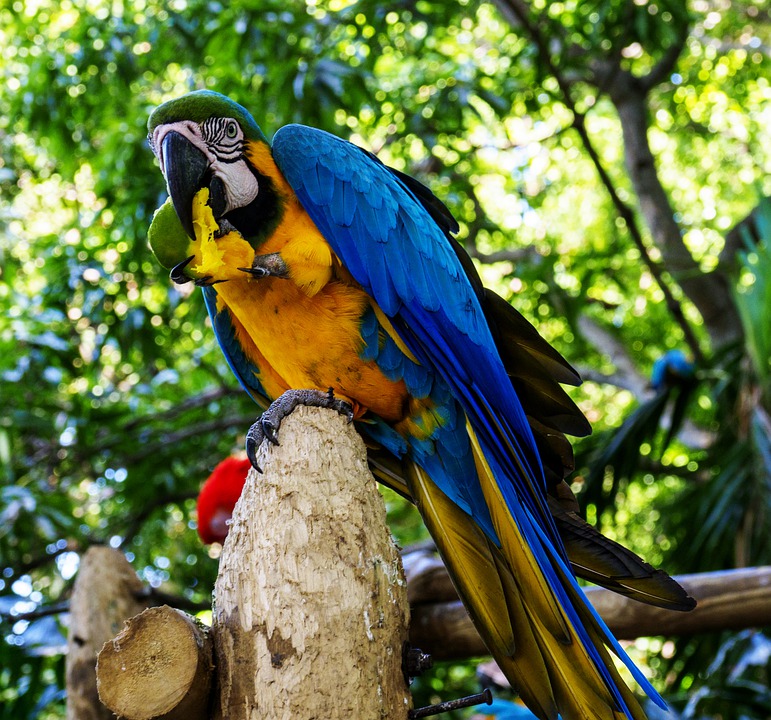Colombia
(República de Colombia (Republic of Colombia))




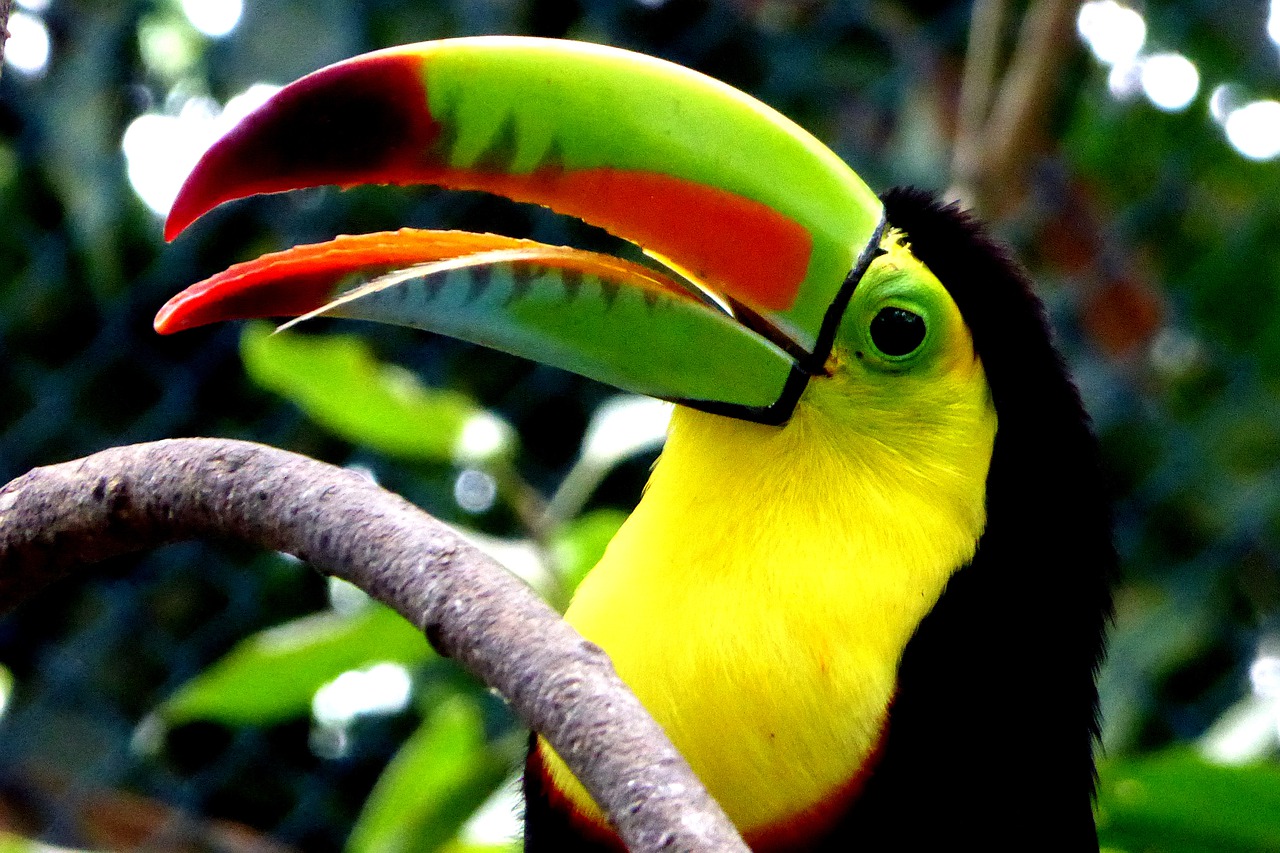



Capital of Colombia: Bogotá
Population (Estimated July 2012): 45,239,079
Area: 1,141,748 km2 or 440,831 mi2
Currency: Peso (Col$)
Official Language: Spanish
Political Information: Unitary Presidential Constitutional Republic
Official Religion: No Official Religion (approximately 90% of the population are Roman Catholic and 10% have other religious beliefs)
Highest Mountain: Pico Cristóbal Colón or Pico Simón Bolívar both at 5,775m or 18,947
GDP Official Exchange Rate (OER is more precise at gauging a countries economic power)
(Estimated 2005): $321.5 billion (US$)
GDP Purchasing Power Parity (PPP is good for gauging living conditions and use of resources but not as accurate as OER. This data has been calculated based on the sum value of all goods and services produced in the country valued at prices prevailing in the United States)
(Estimated 2011): $470.7 billion (US$)
GDP (PPP) Per Capita (per member of the population estimated 2011): $10,100 (US$)
Time Zone (GMT/UTC): -5:00
Counties/Provinces/States: 32 departments (departamentos, singular – departamento) and 1 capital district* (distrito capital); Amazonas, Antioquia, Arauca, Atlantico, Bogota*, Bolivar, Boyaca, Caldas, Caqueta, Casanare, Cauca, Cesar, Choco, Cordoba, Cundinamarca, Guainia, Guaviare, Huila, La Guajira, Magdalena, Meta, Narino, Norte de Santander, Putumayo, Quindio, Risaralda, San Andres y Providencia, Santander, Sucre, Tolima, Valle del Cauca, Vaupes, Vichada
Additional: $470.7 billion (US$)
Sources: Independence from Spain was declared on the 20th of July 1810 but not recognised until the 7th of August 1819.
Colombia
Colombia, located in the northwestern part of South America, is a vibrant and diverse country with a rich history and culture. With a population of over 50 million people, Colombia is the fourth largest country in South America and has significant economic and political influence in the region. Known for its stunning landscapes, vibrant cities, and warm and welcoming people, Colombia has become an increasingly popular tourist destination in recent years.
Summary
- Colombia is a vibrant South American nation with a diverse culture and rich history.
- From the Andes to the Caribbean, Colombia’s geography and climate offer a range of landscapes and ecosystems.
- Colombian culture is known for its music, festivals, and celebration of diversity.
- Colombia’s history includes pre-Columbian civilizations, Spanish colonization, and modern democracy.
- Colombian cuisine is a delicious blend of indigenous, Spanish, and African influences.
Geography and Climate of Colombia: From the Andes to the Caribbean
Colombia’s geography is incredibly diverse, with a wide range of landscapes that include the Andes Mountains, the Amazon rainforest, and the Caribbean coast. The Andes Mountains run through the western part of the country, creating breathtaking landscapes and providing opportunities for outdoor activities such as hiking and mountain climbing. The Amazon rainforest covers a large portion of Colombia’s southern region, offering visitors the chance to explore one of the most biodiverse areas on the planet.
Colombia’s climate varies depending on the region. The coastal areas, including the Caribbean coast, have a tropical climate with high temperatures and humidity year-round. The Andean region experiences cooler temperatures due to its higher elevation, while the Amazon rainforest has a hot and humid climate with heavy rainfall throughout the year. Colombia’s diverse climate allows for a wide range of agricultural activities, including coffee production in the cooler highlands and banana cultivation in the warmer coastal areas.
Colombian Culture and Society: Diversity, Music, and Festivals
Colombia is known for its multicultural society, with a population that is made up of various ethnic groups. The country has a rich indigenous heritage, with over 80 different indigenous groups living throughout Colombia. In addition to indigenous communities, Colombia is home to people of African, European, and Middle Eastern descent, among others. This diversity is reflected in Colombia’s vibrant culture, which is a blend of different traditions and customs.
Music plays a central role in Colombian culture, with various genres and styles that are unique to the country. Salsa, cumbia, and vallenato are some of the most popular music genres in Colombia, with each having its own distinct rhythm and dance style. These genres have gained international recognition and have become an important part of Colombia’s cultural identity.
Colombia is also known for its lively festivals, which showcase the country’s vibrant culture and traditions. One of the most famous festivals in Colombia is the Carnaval de Barranquilla, which takes place in the city of Barranquilla and is considered one of the largest carnivals in the world. Another popular festival is the Feria de las Flores, or Flower Festival, which takes place in Medellin and celebrates the region’s flower industry with parades, concerts, and flower exhibitions.
The History of Colombia: From Pre-Columbian Times to Modern Democracy
Colombia has a rich and complex history that dates back thousands of years. Before the arrival of the Spanish colonizers in the 16th century, Colombia was inhabited by various indigenous groups, including the Muisca, Tayrona, and Quimbaya civilizations. These civilizations had advanced agricultural practices and developed complex social structures.
Spanish colonization began in the early 16th century, with the arrival of Christopher Columbus in 1498. The Spanish established several colonies throughout Colombia, including Santa Marta, Cartagena, and Bogota. The Spanish rule lasted for nearly three centuries until Colombia gained its independence in 1819 under the leadership of Simon Bolivar.
In more recent history, Colombia has faced significant challenges, including drug wars and political instability. The country became a major producer and exporter of illegal drugs in the 20th century, leading to violence and conflict between drug cartels, guerrilla groups, and the government. However, in recent years, Colombia has made significant progress in addressing these issues and has transitioned to a more stable and democratic society.
Colombian Cuisine: A Delicious Blend of Indigenous, Spanish, and African Influences
Colombian cuisine is a delicious blend of indigenous, Spanish, and African influences. The country’s diverse geography and cultural heritage have contributed to a wide variety of dishes that are unique to Colombia. One of the most famous Colombian dishes is bandeja paisa, which is a hearty meal consisting of rice, beans, ground beef, fried egg, plantains, avocado, and arepas.
Arepas are another staple of Colombian cuisine and are made from ground maize dough. They can be filled with various ingredients such as cheese, meat, or eggs and are often eaten for breakfast or as a snack. Another popular dish is sancocho, which is a hearty soup made with meat, vegetables, and herbs. Sancocho is often considered a comfort food in Colombia and is enjoyed by people of all ages.
Colombia is also known for its coffee production, with the country being one of the largest exporters of coffee in the world. Colombian coffee is known for its high quality and rich flavor, and coffee tours and tastings are popular activities for tourists visiting the country.
Tourism in Colombia: From Beaches to Mountains, Cities to Jungles
Colombia has become an increasingly popular tourist destination in recent years, thanks to its stunning landscapes, vibrant cities, and warm hospitality. The country offers a wide range of attractions for visitors to explore, from beautiful beaches to majestic mountains, bustling cities to lush jungles.
One of the most popular tourist destinations in Colombia is Cartagena, a historic city located on the Caribbean coast. Cartagena is known for its well-preserved colonial architecture and vibrant culture. Visitors can explore the city’s historic center, which is a UNESCO World Heritage site, and enjoy the beautiful beaches and lively nightlife.
Medellin, Colombia’s second-largest city, is another popular destination for tourists. Once known for its high crime rates, Medellin has undergone a transformation in recent years and is now considered one of the most innovative cities in the world. Visitors can explore the city’s modern infrastructure, including its cable car system and outdoor escalators, and enjoy its vibrant arts and culture scene.
The coffee region, located in the central part of the country, is another popular destination for tourists. This region is known for its picturesque landscapes, coffee plantations, and charming towns. Visitors can learn about the coffee production process, hike through lush forests, and enjoy breathtaking views of the mountains.
Colombia’s Economy: Agriculture, Mining, and Services
Colombia has a diverse economy that relies on various sectors, including agriculture, mining, and services. The country is one of the largest producers of coffee in the world and is known for its high-quality Arabica beans. Coffee production plays a significant role in Colombia’s economy and provides employment opportunities for thousands of people.
In addition to coffee, Colombia is also a major exporter of other agricultural products such as bananas, flowers, and cocoa. The country’s fertile soil and favorable climate make it an ideal location for agriculture, and Colombia’s agricultural sector contributes significantly to its GDP.
Mining is another important sector of Colombia’s economy, with the country being rich in natural resources such as coal, gold, emeralds, and oil. Colombia is one of the largest producers of coal in the world and has significant reserves of gold and emeralds. The mining industry provides employment opportunities for many Colombians and contributes to the country’s export earnings.
The services sector is also a significant contributor to Colombia’s economy. The country has a well-developed tourism industry that attracts millions of visitors each year, contributing to the country’s GDP. Additionally, Colombia has a growing technology and outsourcing industry, with many international companies establishing operations in the country.
Education and Healthcare in Colombia: Challenges and Progress
Colombia’s education system has made significant progress in recent years, but it still faces several challenges. Access to quality education is a major issue in rural areas and among marginalized communities. The government has implemented various initiatives to improve access to education, including providing scholarships and building schools in remote areas. However, more needs to be done to ensure that all children have access to quality education.
Healthcare in Colombia has also seen improvements in recent years, but challenges remain. The country has a universal healthcare system that provides coverage to all citizens, but there are still disparities in access to healthcare services, particularly in rural areas. The government has implemented programs to improve healthcare infrastructure and increase access to healthcare services, but more investment is needed to address these challenges.
Colombian Politics and Government: Democracy, Conflict, and Peacebuilding
Colombia is a democratic country with a presidential system of government. The president is the head of state and is elected by popular vote for a four-year term. The country has a multi-party system, with various political parties representing different ideologies and interests.
Colombia has a long history of conflict with guerrilla groups, most notably the Revolutionary Armed Forces of Colombia (FARC). The conflict between the government and these groups lasted for over five decades and resulted in thousands of deaths and displacements. However, in recent years, Colombia has made significant progress towards peacebuilding and reconciliation.
In 2016, the Colombian government signed a peace agreement with the FARC, which marked the end of the armed conflict. The peace agreement aimed to address the root causes of the conflict and promote social justice and reconciliation. While challenges remain in implementing the peace agreement, Colombia has made significant strides towards a more peaceful and stable society.
Colombia’s Future: Opportunities and Challenges in a Rapidly Changing World
Colombia’s future prospects are promising, with the country having significant potential for economic growth and continued peacebuilding efforts. The country’s diverse economy, rich natural resources, and growing tourism industry provide opportunities for investment and development. Colombia has also made significant progress in addressing its historical challenges, such as drug trafficking and armed conflict, and has shown a commitment to building a more inclusive and prosperous society.
However, Colombia also faces several challenges that need to be addressed in the coming years. Climate change is a major concern, with the country experiencing the impacts of rising temperatures, deforestation, and natural disasters. Colombia needs to invest in sustainable development practices and adapt to the changing climate to protect its environment and ensure the well-being of its people.
Political instability is another challenge that Colombia needs to address. While the country has made significant progress towards democracy and peacebuilding, there are still underlying issues that need to be resolved. Corruption, inequality, and social unrest are some of the challenges that Colombia needs to tackle to ensure a stable and prosperous future.
In conclusion, Colombia is a vibrant South American nation with a rich history, diverse culture, and stunning landscapes. The country’s geography and climate offer a wide range of attractions for tourists, from beautiful beaches to majestic mountains. Colombia’s economy relies on various sectors, including agriculture, mining, and services, and the country has made significant progress in improving education and healthcare. While challenges remain, Colombia’s future prospects are promising, with opportunities for economic growth and continued peacebuilding efforts.
FAQs
What is Colombia?
Colombia is a country located in South America, bordered by Venezuela, Brazil, Peru, Ecuador, and Panama.
What is the capital of Colombia?
The capital of Colombia is Bogotá.
What is the population of Colombia?
As of 2021, the estimated population of Colombia is approximately 50 million people.
What is the official language of Colombia?
The official language of Colombia is Spanish.
What is the currency of Colombia?
The currency of Colombia is the Colombian peso.
What are some popular tourist attractions in Colombia?
Some popular tourist attractions in Colombia include the historic city of Cartagena, the coffee region, the Amazon rainforest, and the beaches of Santa Marta.
What is the climate like in Colombia?
Colombia has a tropical climate with high temperatures and humidity throughout the year. However, the climate varies depending on the region, with cooler temperatures in the Andes mountains and more rain in the Amazon region.
What is the economy of Colombia like?
Colombia has a mixed economy with a strong focus on agriculture, mining, and manufacturing. The country has experienced significant economic growth in recent years and is considered one of the fastest-growing economies in Latin America.
Climate Zones of Colombia: Different climate regions Of Colombia
Colombia, located in the northwestern part of South America, is a country known for its diverse geography and climate. It is bordered by the Caribbean Sea to the north, the Pacific Ocean to the west, and is home to the Andes Mountains which run through the country....
Political Boundaries of Colombia: Provinces, Districts, or Historical Boundaries.
Political boundaries are the lines that separate different territories or regions within a country. These boundaries play a crucial role in governance as they define the jurisdiction and authority of different administrative units. In Colombia, political boundaries...
Terrain and Topography of Colombia: mountains, valleys, and plains.
Introduction Colombia is a country known for its diverse and stunning landscapes. From the towering peaks of the Andes Mountains to the lush rainforests of the Amazon, Colombia offers a wide range of terrain and topography for travelers and adventurers to explore....
History of Colombia
Colombia, located in the northwest corner of South America, is a country with a rich and complex history. From its indigenous peoples to Spanish colonization, from independence to civil war and drug cartels, Colombia’s past has shaped its present in profound...
Natural Resources of Colombia: Where Natural Resources are located In Colombia
Colombia is a country blessed with an abundance of natural resources, making it one of the richest countries in terms of natural wealth. From its mineral deposits to its oil and gas reserves, from its diverse forests and jungles to its fertile agricultural lands,...
Cultural or Historical Sites of Colombia: Important Cultural Landmarks or Historical Sites In Colombia
Colombia is a country with a rich history and diverse culture. From its indigenous roots to its colonial past, Colombia has a fascinating story to tell. The country is home to numerous archaeological sites, museums, and cultural events that showcase its vibrant...
Population Density of Colombia
Population density refers to the number of people living in a specific area, usually measured as the number of individuals per square kilometer. It is an important indicator of how crowded or sparsely populated an area is and can provide insights into various social,...
Discovering the Hidden Gems of Colombia: A Journey Through South America’s Best Kept Secret
Colombia, a country located in the northwestern region of South America, is a destination that has long been overlooked by travelers. However, in recent years, it has emerged as one of the most exciting and vibrant countries to visit. This blog post aims to uncover...



